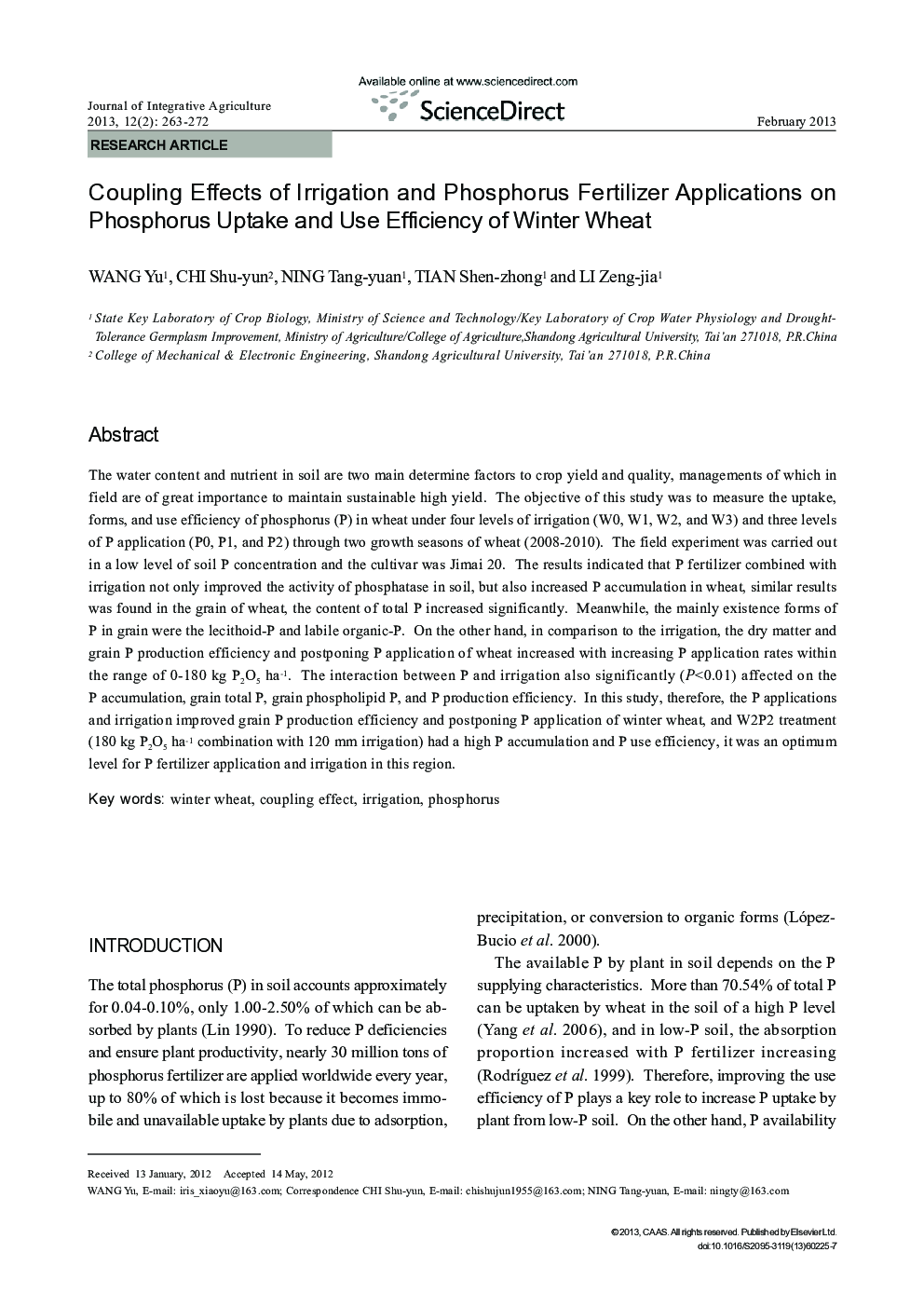| Article ID | Journal | Published Year | Pages | File Type |
|---|---|---|---|---|
| 4494823 | Journal of Integrative Agriculture | 2013 | 10 Pages |
The water content and nutrient in soil are two main determine factors to crop yield and quality, managements of which in field are of great importance to maintain sustainable high yield. The objective of this study was to measure the uptake, forms, and use efficiency of phosphorus (P) in wheat under four levels of irrigation (W0, W1, W2, and W3) and three levels of P application (P0, P1, and P2) through two growth seasons of wheat (2008–2010). The field experiment was carried out in a low level of soil P concentration and the cultivar was Jimai 20. The results indicated that P fertilizer combined with irrigation not only improved the activity of phosphatase in soil, but also increased P accumulation in wheat, similar results was found in the grain of wheat, the content of total P increased significantly. Meanwhile, the mainly existence forms of P in grain were the lecithoid-P and labile organic-P. On the other hand, in comparison to the irrigation, the dry matter and grain P production efficiency and postponing P application of wheat increased with increasing P application rates within the range of 0–180 kg P2O5 ha−1. The interaction between P and irrigation also significantly (P<0.01) affected on the P accumulation, grain total P, grain phospholipid P, and P production efficiency. In this study, therefore, the P applications and irrigation improved grain P production efficiency and postponing P application of winter wheat, and W2P2 treatment (180 kg P2O5 ha−1 combination with 120 mm irrigation) had a high P accumulation and P use efficiency, it was an optimum level for P fertilizer application and irrigation in this region.
